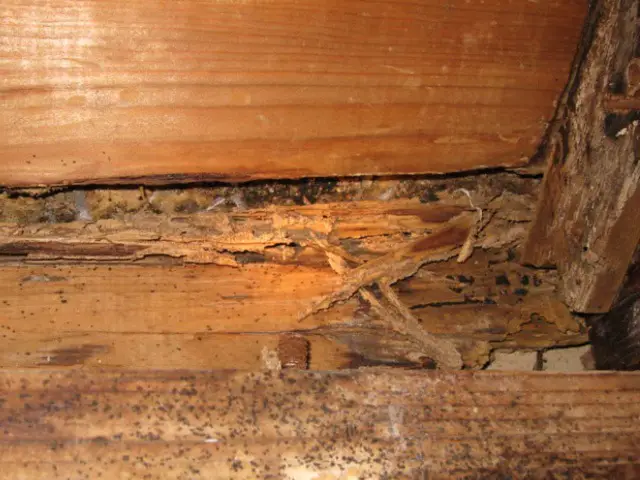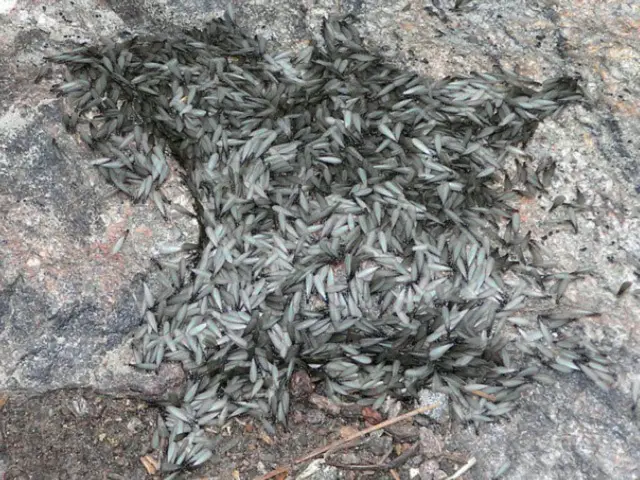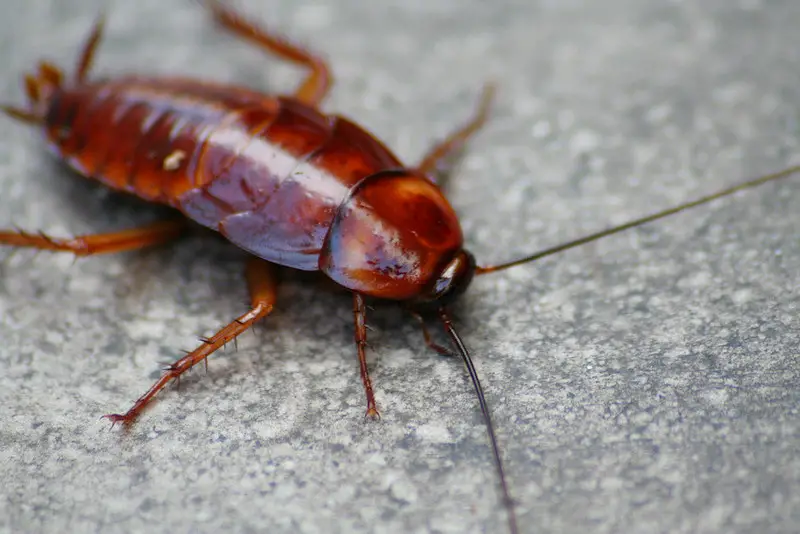Fleas are tiny dark brown parasitic pests that can live for months without a food source. These resilient pests infest the coat and skin of dogs, cats, and small furry animals. Fleas feed on the blood of the host.
Female fleas can consume 15 times their body weight in blood every day. While adult fleas suck blood from a host animal such as a dog, cat, rodent or another warm-blooded mammal, their larvae feed on organic debris in the host animal’s environment.
But the question is: “How long can fleas live without a food source?”
Adult fleas can live up to two weeks without a food source. But, female fleas cannot reproduce without feeding on blood. But, if an adult flea has entered a dormant state, it can live for about 180-days.
What do fleas eat?
Adult fleas eat blood. They feed on the host animal’s blood, such as cats and dogs. Fleas bite the host animal and suck its blood.
How Long Fleas Live Without Food Source
Fleas can only live for a few weeks without a food source. In most cases, if a flea is removed from the host animal, it will starve within a few days.
Related posts:
- How Long Fleas Live Without A Host?
- How Long Can Fleas Live On Humans?
- How Long Can Fleas Live Without A Cat?
- How long will fleas live in a house without pets?
- Can Dogs Eat Beetles?
Are humans a food source for fleas?
Humans can be a food source for fleas, but they normally feed off host animals’ blood.
Do fleas die without hosts?
Parasites, including fleas, need a regular supply of blood to survive. Adult fleas are dependent on the host’s blood. Without it, fleas would die fast. In a short couple of days, an adult flea could die without a host.
Not all fleas would die without a host. Only adult fleas are dependent on a host. Younger fleas can survive a lot longer without a host than and adult flea.
How long can flea larvae live without a host?
Because newly hatched flea larvae don’t feed on the host’s blood, they are a lot less vulnerable. Instead of blood, flea larvae consume debris found in carpets and other floor covering around the house. Flea larvae will leave your pets alone, it’s the adult fleas that are the problem for pet owners.
After the larvae stage, fleas enter the cocooned “pupae” stage in their lifecycle. At this stage in their lives, fleas hibernate for an extended period. The cocooned pupae stay in hibernation until they sense a potential host in the area. The pupae can survive for more than one hundred days.
Even if you get rid of fleas from your pet, the eggs will remain on the host. Therefore, even after getting rid of fleas, it’s possible for flea infestation to recur. After the pupae emerge from their cocoons, they are ready to drive your pet crazy.
How long will fleas live in a house without pets?
Fleas may use humans as carriers, but they couldn’t live long in a house without pets. Fleas need pets or small animals to lay their eggs, which then fall off the hair of the host. Fleas will only live for a couple of days in a house without pets.
The most widespread fleas are the dog flea (Ctenocephalides canis) and the cat flea (Ctenocephalides felis). Human or house flea (Pulex irritans) is quite rare in developed areas.
It isn’t the house flea but the cat flea responsible for close to 75% of home infestations. As their names suggest, dog and cat fleas prefer cats and dogs hosts, but these parasites will bite and suck human blood to survive another day.
Fleas reproduce at a lightning-fast rate. A female flea can lay as many as 1,000 eggs during her lifespan. Larvae can hatch from eggs in only a couple of days. Warmer temperatures, the carbon dioxide from our breath, the host’s body heat, and the physical pressure as pets and humans walk on top of pupae can trigger adult fleas to emerge from their cocoons. This means that the movement of the human members of your household can attract the attention of cat fleas which might rather feast on the blood of pets than humans.
Flea infestations can occur after moving into a new home or returning from a vacation. That’s because when fleas in their cocoons receive a stimulus that a suitable host may be nearby, they become active.
While fleas don’t have wings like many other pests, these parasites don’t need wings since they are expert jumpers. When sensing warmth and carbon dioxide that might signal a potential host, fleas can jump as high as 200 times their body length. Once firmly attached to a host, a flea is ready to feed on the host’s blood.
One flea feeds for at least eight hours a day. Fleas can live on a host for up to four months. Most adult fleas can only survive for a few days without locating a host, but there are exceptions. For example, some fleas survived for two years without feeding in high humidity and low temperatures.
What are fleas?
Fleas are small, wingless insects that need a host to live. These pests feed on the blood of the host. The host can be mammals, birds, and people. Cat fleas (Ctenocephalides felis) are the most common in U.S. homes. While dog fleas can be a problem too, cat fleas infest dogs and cats most frequently in the United States. Fleas are tiny insects. The size of an adult flea is only about 1/12 of an inch (2mm), but it can jump about 200 times its body length.
In the United States, more than 9 billion dollars is spent on preventing, controlling, or getting rid of fleas. Flea control is one of the biggest expenses pet owners are forced to deal with. Fortunately, there are many effective flea treatments available today.
If you ever found a flea on a host (usually, cat, dog, or human), you know they aren’t easy to see. Adult cat fleas are between one and three millimeters. Although fleas are famous for their jumping ability, they avoid traveling long distances. Instead, they wait for the right host and jump. Once on the host, fleas remain until dead or groomed from the host. Adult fleas die without a host. If they can’t find a new host within a couple of days, they are dead.
How long do fleas live?
Under ideal conditions, fleas can live a year and a half. For a flea to live a long time, it needs the right temperature, humidity, and a host.
How long do adult fleas live?
Although fleas can live for a year and a half, adult fleas only live for up to three months. But, that’s only possible if fleas have a viable host. Without the right host, fleas die in a few days.
Why do fleas bite?
Adult fleas are parasites. These parasites feed on the blood of the host animal. Fleas bite their hosts and suck their blood. Cat fleas will bite and feed on humans, opossums, foxes, rodents, dogs, cats and humans.
Fleas mostly feed on a pet while the pet is resting or sleeping. Unfortunately, some pets and people are sensitive to flea bites. When these parasites feed, their saliva can cause an allergic reaction with skin lesions and severe itching in the host.
The flea bites can leave small, hard, red welts on the host’s skin. Allergic hosts may lose hair and will scratch or bite an irritated area until it becomes raw. A flea infestation may severely affect a host’s health. Fleas can cause anemia. These parasites can be fatal to kittens and puppies. While grooming, dogs and cats may ingest adult fleas that carry tapeworm cysts.
What is a flea host?
Fleas have a wide variety of potential hosts, including humans. Adult fleas must have hosts to survive. Fleas colonize the hair, burrows or nests of their host. These pests use their legs, dorsal shield, and chemoreceptors – located on the antennae – to find a host. Fleas are attracted by the smell of the host’s urine and sweat and the carbon dioxide the potential hosts exhale.
Fleas are parasites the feed on the host’s blood. They bite their hosts and suck their blood. The hosts are mainly small mammals, rodents and pets. Less frequently, birds can be flea hosts too. Fleas escape the body of a dead animal in search of a new host.
Who can be a flea host?
Fleas prefer animal hosts, but they might bite you. These pests are attracted to hosts with hairy bodies. Therefore, the human body isn’t the ideal place for fleas. Our relatively hairless body doesn’t provide enough heat or shelter for fleas. The ideal host would have a moist, hairy body, like your dog or cat. Generally, most small mammals make for excellent hosts for fleas. And, even birds can be flea hosts.
Can fleas live on humans?
The fleas that live on cats and dogs, don’t live on humans. These fleas may bite you, but they prefer hosts with a lot more hair, like dogs.
Cat fleas and dog fleas do not live on humans. However, that doesn’t mean that fleas cannot bite you. Fleas mostly live on mammals, rodents and birds.
Even though there are 2,500 different types of fleas in the world, cat and dog fleas cause most flea problems in North America.
Fleas are attracted to animals because of their fur or feathers. They can thrive on furry mammals because such an environment allows them to hide, feed on the host’s blood, and lay their eggs. Eventually, the eggs hatch after the larva and pupa stages. This cycle leads to a flea infestation on your pet that must be treated before it gets out of control.
The simple fact is that fleas cannot live on humans because people are not hairy enough. Unlike other mammals, humans lack substantial hair like many potential flea hosts. Fleas need fur or feathers for protection and to reproduce.
Can fleas live on clothes?
Fleas don’t live on clothes. They may hide in clothes, temporarily, until they jump to a viable host. Fleas can live on clothes for short periods, not longer than a day or two at most. The reason fleas cannot live on clothes is the lack of a blood source. For fleas to survive, they need a host they can bite and feed on its blood.
If you wear clothes with fleas, they may bite you. A flea bite can be painful and it can be dangerous too if you are allergic. If fleas are on the outside of your clothes, they cannot bite you because they cannot bite through your clothing.
Just because fleas don’t live on clothes doesn’t mean they cannot lay their eggs there. As a result, unknowingly, you could be spreading fleas from one location to another. An easy way to prevent a flea infestation is to wash your clothes after spending time in a flea-infested area.




